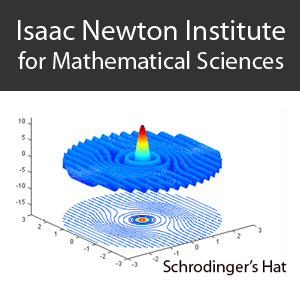Coherent interferometric imaging in random media II
Duration: 45 mins 31 secs
Share this media item:
Embed this media item:
Embed this media item:
About this item

| Description: |
Borcea, L (Rice)
Thursday 28 July 2011, 11:45-12:30 |
|---|
| Created: | 2011-08-02 09:21 | ||||
|---|---|---|---|---|---|
| Collection: | Inverse Problems | ||||
| Publisher: | Isaac Newton Institute | ||||
| Copyright: | Borcea, L | ||||
| Language: | eng (English) | ||||
| Credits: |
|
||||
| Abstract: | I will describe the mathematical problem of imaging remote sources or reflectors in heterogeneous (cluttered) media with passive and active arrays of sensors. Because the inhomogeneities in the medium are not known and cannot be estimated, we model the uncertainty about the clutter with spatial random perturbations of the wave speed. The goal of the lectures is to carry out analytically a comparative study of the resolution and signal-to-noise ratio (SNR) of two array imaging methods: the widely used Kirchhoff migration (KM) and coherent interferometry (CINT). By noise in the images we mean fluctuations that are due to the random medium.
Kirchhoff migration and its variants are widely used in seismic inversion, radar and elsewhere. It forms images by superposing the wave fields received at the array, delayed by the travel times from the array sensors to the imaging points. KM works well in smooth and known media, where there is no wave scattering and the travel times can be estimated accurately. It also works well with data that has additive, uncorrelated measurement noise, provided the array is large, because the noise is averaged out by the summation over the many sensors. KM images in clutter are unreliable and difficult to interpret because of the significant wave distortion by the inhomogeneities. The distortion is very different from additive, uncorrelated noise, and it cannot be reduced by simply summing over the sensors in the array. CINT images efficiently in clutter at ranges that do not exceed one or two transport mean free paths. Beyond such ranges the problem becomes much more difficult, specially in the case of active arrays, because the clutter backscatter overwhelms the echoes from the reflectors that we wish to image. Coherent imaging in such media may work only after pre-processing the data with filters of clutter backscatter. The CINT method forms images by superposing time delayed, local cross-correlations of the wave fields received at the array. The local cross correlations are computed in appropriate time windows and over limited array sensor offsets. It has been shown with analysis and verified with numerical simulations that the time and offset thresholding in the computation of the cross-correlations is essential in CINT, because it introduces a smoothing that is necessary to achieve statistical stability, at the expense of some loss in resolution. By statistical stability we mean negligibly small fluctuations in the CINT image even when cumulative fluctuation effects in the random medium are not small. |
|---|---|
Available Formats
| Format | Quality | Bitrate | Size | |||
|---|---|---|---|---|---|---|
| MPEG-4 Video | 640x360 | 1.84 Mbits/sec | 631.35 MB | View | Download | |
| WebM | 640x360 | 814.25 kbits/sec | 271.15 MB | View | Download | |
| Flash Video | 484x272 | 568.83 kbits/sec | 189.63 MB | View | Download | |
| iPod Video | 480x270 | 506.37 kbits/sec | 168.81 MB | View | Download | |
| MP3 | 44100 Hz | 125.0 kbits/sec | 41.49 MB | Listen | Download | |
| Auto * | (Allows browser to choose a format it supports) | |||||

